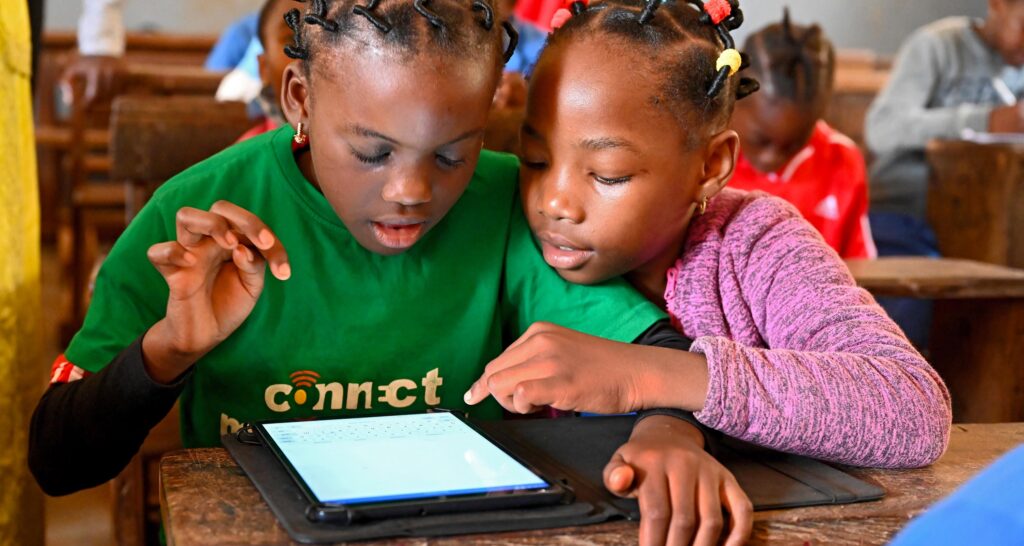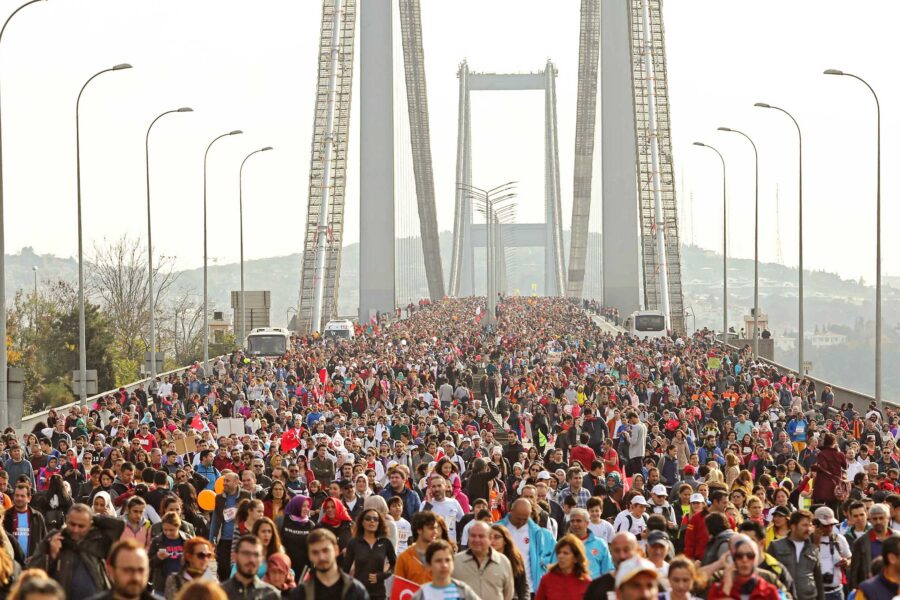Harnessing digital to rescue the SDGs
In this digital age, over two billion people worldwide still lack internet access. With progress on the SDGs way off course, we must ramp up access to, and application of, digital technologies – including AI – to get Agenda 2030 back on track
Cyberspace — Global

With only 15% of Sustainable Development Goal (SDG) targets on track and 30% of the Goals having stalled or gone into reverse, the SDGs are in jeopardy.
We now risk hurtling toward a future marked by intractable inequalities, cascading crises, and planetary breakdown.
Add to this the fact that we are witnessing tectonic shifts in technology driven by artificial intelligence (AI), and humanity’s very existence seems to be on the line.
To my mind, the choice is clear. If we want to have the chance to get the SDGs back on track in the little time we have left, we must double down on digital technologies. We cannot afford to leave anyone behind, including the 2.7 billion people who have never used the internet.
17 September is SDG Digital Day
That is why, together with the United Nations Development Programme (UNDP) and our knowledge partner BCG, ITU is organizing SDG Digital Day on 17 September 2023 – to put data and digital technologies at the core of SDG rescue efforts.
We know from the latest SDG report that without accurate data, even the most well-intentioned programs and initiatives are working in the dark.
Statistical information powered by digital infrastructure offers the floodlight we need to pinpoint gaps and get the full picture of our progress and pitfalls on all 17 SDGs.
SDG Digital Day will take place in New York on the eve of the 2023 SDG Summit – the High-level Political Forum on Sustainable Development under the auspices of the UN General Assembly.
It is the ideal moment to showcase scalable use cases of how digital technologies can advance each SDG. Participants will come away inspired by country-level success stories, from satellite-powered climate monitoring to life-changing mobile money applications to ground-breaking school connectivity solutions.
It will also offer SDG stakeholders a unique chance to consolidate financing and create bold new partnerships through the ITU-led Partner2Connect Digital Coalition, which has so far mobilized USD 30 billion toward meaningful connectivity projects in hard-to-reach communities all over the world.
But this is just a fraction of what is needed to make connectivity universal, with an ITU study and IMF estimates putting the digital infrastructure investment needs at around USD 400 billion at least.
That is why we have raised our Partner2Connect ambitions to mobilize pledges valued at USD 100 billion for meaningful connectivity and sustainable digital transformation by 2026.
Because how can we expect people to leverage technology for healthcare, innovation, education, or employment if they cannot afford a digital device or service, lack the required digital skills, do not find the content useful, or do not feel safe online?
Pooling resources
The challenges before us are too big and expensive for any one stakeholder to tackle alone.
The Joint SDG Fund is one of the best tools in our toolbox when it comes to delivering the 2030 Agenda. This interagency mechanism for integrated policy support and strategic financing works with 31 UN entities in 119 country teams and multi-country offices.
Led by UN Resident Coordinators, the fund aims to leverage each UN agency’s expertise and to enhance joint programs to deliver on the SDGs more efficiently and effectively.
ITU has already lent its technical expertise in standardization, radiocommunication, and digital development to several joint programs aimed at accelerating digital inclusion, tech innovation, and economic resilience.
Through the Joint SDG Fund, for example, ITU and the UNDP Multi-Partner Trust Fund Office signed agreements to strengthen community resilience in Micronesia and promote economic diversification and digital transformation in South Pacific small island developing states.
ITU and UNDP will also lead the new Digital Transformation Window of the Joint SDG Fund, which has enormous potential to integrate programmatic work on digital at the country level.
Among our most urgent tasks is breaking down silos to apply digital advances in education, health, agriculture, the environment, trade, and other areas of the SDGs as one United Nations. This holistic, integrated, multi-stakeholder approach to sustainable digital transformation draws on the strength that each of us brings to the table.
All hands on deck
As the UN agency for digital technologies, ITU provides a trusted, well-established, global platform for all stakeholders to deliver on the SDGs.
On 6 and 7 July 2023, ITU convened the AI for Good Global Summit, where leading voices from government, industry, academia, civil society, and the UN came to Geneva to explore how to harness AI as a force for good in service of the SDGs.
In light of the increasing warnings about AI risks, they also addressed the guardrails and potential global governance frameworks needed for a safe and responsible AI.
The summit was a physical manifestation of the entire AI for Good platform that has been led by ITU in partnership with 40 UN organizations since 2017.
The sole UN entity with private sector membership, ITU is also at the forefront of global technical standard-setting that supports AI and other emerging technologies.
When it comes to conversations on how AI will shape our shared digital future, everyone has the right to participate with an equal voice.
ITU’s focus groups – open to all – have led pre-standardization work in support of AI’s contribution to health, environmental sustainability, autonomous and assisted driving, and natural disaster management, and other areas.
Together with UNESCO, ITU also co-chairs the UN High-level Committee on Programmes’ Inter-agency Working Group on AI, aimed at advancing policy and streamlining AI activities across the UN system.
Technology will not wait. We need to shape AI faster than it is shaping us, in a world where AI represents one of our best hopes to rescue the SDGs.
Moving fast on quick wins
Digital is the game-changer that can make the 2030 Agenda real in the lives of people everywhere. Addressing digital inequalities is a quick win for all 17 SDGs. Doing it now could unleash unprecedented opportunities for:
- children and youth, through Giga, an ITU–UNICEF initiative to connect every school to the internet
- women and girls, through our EQUALS initiative with UN Women
- global health, through the ITU–WHO AI for Health focus group
- economic development, through digital financial inclusion
- climate action, through our work with the World Meteorological Organization on early warning systems for all by 2027
I am calling on every stakeholder to get on board with digital to rescue the SDGs in this decade. Let us roll up our sleeves and deliver the 2030 Agenda with digital before it is too late.





